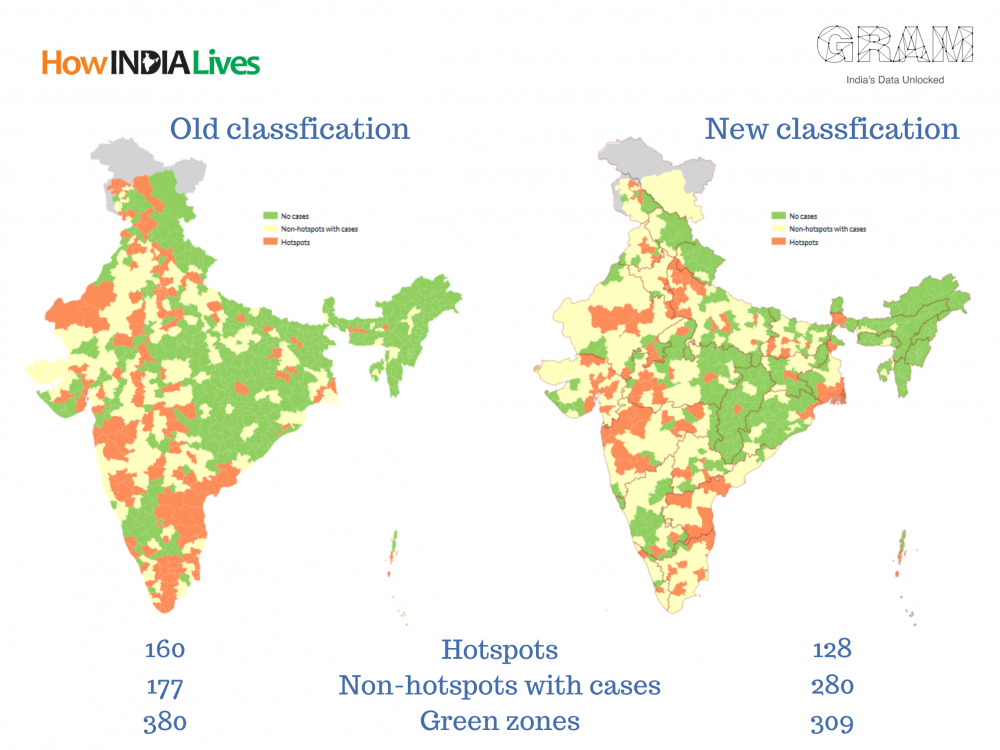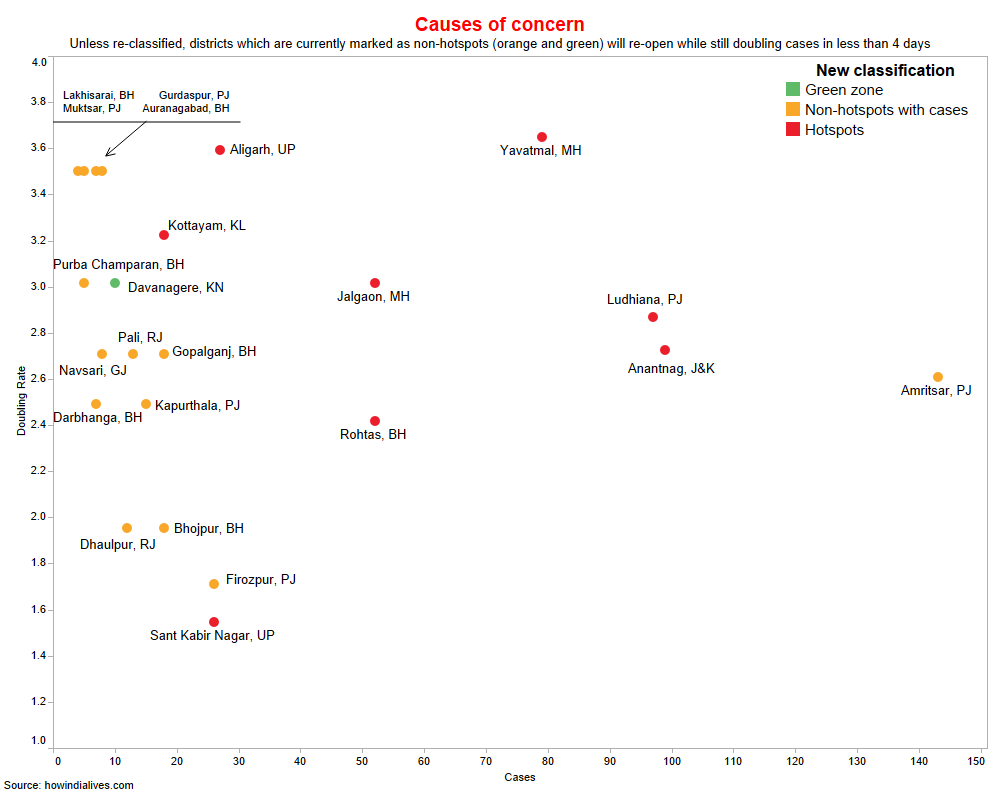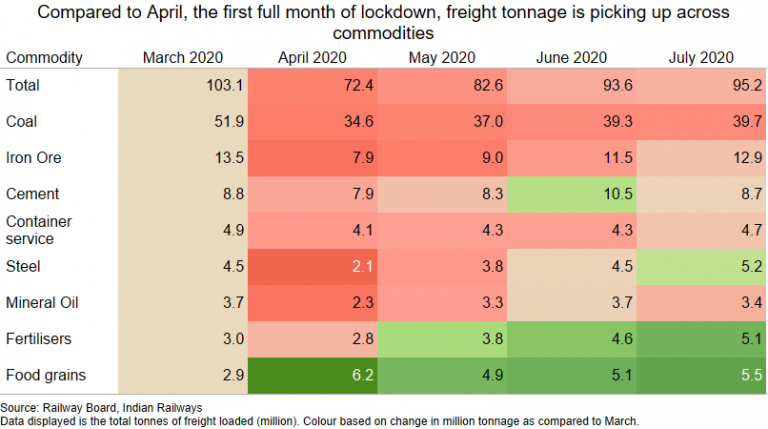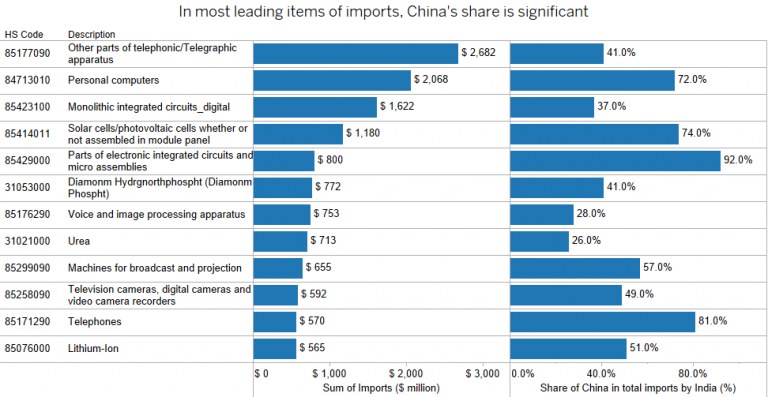Note: this is part of the tenth edition of our weekly newsletter, the Databyte. To receive it in your inbox, subscribe here.
… don’t it always seem to go
Joni Mitchell in Big Yellow Taxi
That you don’t know what
you’ve got
’till it’s gone
The song has been playing around in my head after my conversation with a school friend whose family runs a small hotel in my hometown. While the third phase of the lockdown or the staggered opening has allowed private offices to run with 1/3rd of the staff, restaurants and hotels have no relief. These will remain closed for a long time to come.
Even when they do open, the government has indicated that it’ll have to be with reduced number of guests. Margins are slim, and there’s no way restaurants make money if they are asked to cut down capacity to 50%.
These guidelines came after the government re-classified all districts in the country. The number of districts declared as hotspots reduced from 160 to 128, number of green zones from 380 to 309 and the number of non-hotspots with cases (orange) increased from 177 to 280.

The guidelines to the staggered opening depend on the category the district is classified under. Further, under hotspots, containment zones, buffer zones and non-containment zones have different guidelines on the levels of movement allowed. All of India’s metros are declared hotspots, with Mumbai alone having more than 1400 containment zones.
But, which states have made progress since the last round of classification of districts?
Comparing the two district-level maps showed obvious gains in South and North-East India. The North-East had few cases to begin with, and have taken control on even the few non-hotspot districts present.
We classified the movement of districts into 4 categories to map progress:
- Improved: district moved from Red -> Orange or Orange -> Green
- No change: already in green zone with no change
- No change: classified as Orange or Red, with no change
- Deteriorated: moved from Green -> Orange or Orange -> Red

Gujarat already has the second largest number of cases in the country. It’s also not holding too well in the comparison above. Only 9% of districts have improved while 45% of districts have moved to a more critical category. A third of its districts which were either hotspots or non-hotspots with cases have not seen an improvement.
45% of districts in Bihar also showed a deterioration in their categories. However, the situation is marginally better than Gujarat as 34% of its districts which were in the Green zone have remained there.
Among all the states compared above, West Bengal is the only state where no district has shown an improvement.
The new classification is based on number of tests conducted, recovery rates and local surveillance feedback apart from total cases, growth and deaths. However, one of the conditions in the earlier methodology was based on doubling rates. If a district was doubling its number of cases in less than 4 days for the past week, it was considered as a hotspot.
There are 23 such districts which are currently doubling their tally in less than 4 days. 7 from Bihar and 6 from Punjab.
14 of these 23 districts are classified under the Orange zone. Davanagere from Karnataka being the sole under Green Zone. Rest are already declared hotspots.

In the edition before last, I said that the migrant crisis is yet to play out. This week, the government started trains and bus services to allow the migrants stranded outside their states to return.
In fact, the substantial increase in cases in Punjab are linked to people returning. A large number of Sikh pilgrims evacuated from Maharashtra’s Nanded tested positive for the virus. Punjab relied on Maharashtra properly screening and testing people before arranging to transport them.
So far, 292 pilgrims have been found infected with the virus, a government statement said. Over 3,500 pilgrims returned to Punjab over the week.
The Punjab government will have to re-classify these districts as hotspots under Red zone. Under the new central guidelines, state governments have the power to move a district upwards (green to orange, orange to red), but do not have the power to move a district downwards. Even if these are the only cases discovered in these districts, it will have to wait a full 3 weeks for no new case to appear to be able to move it to green zone and open up more economic activity.
Because of feedback delays within complex systems, by the time a problem becomes apparent, it may be unnecessarily difficult to solve.
Donella H. Meadows, Thinking in Systems: A Primer
Or, to put it simply, a stitch in time saves nine.
[activecampaign form=51]


